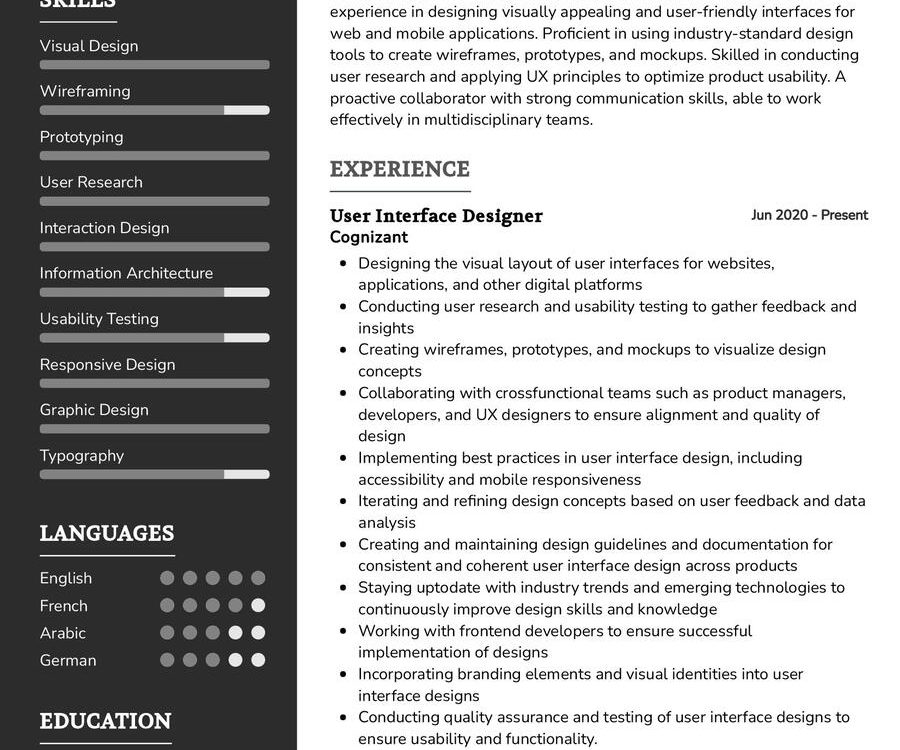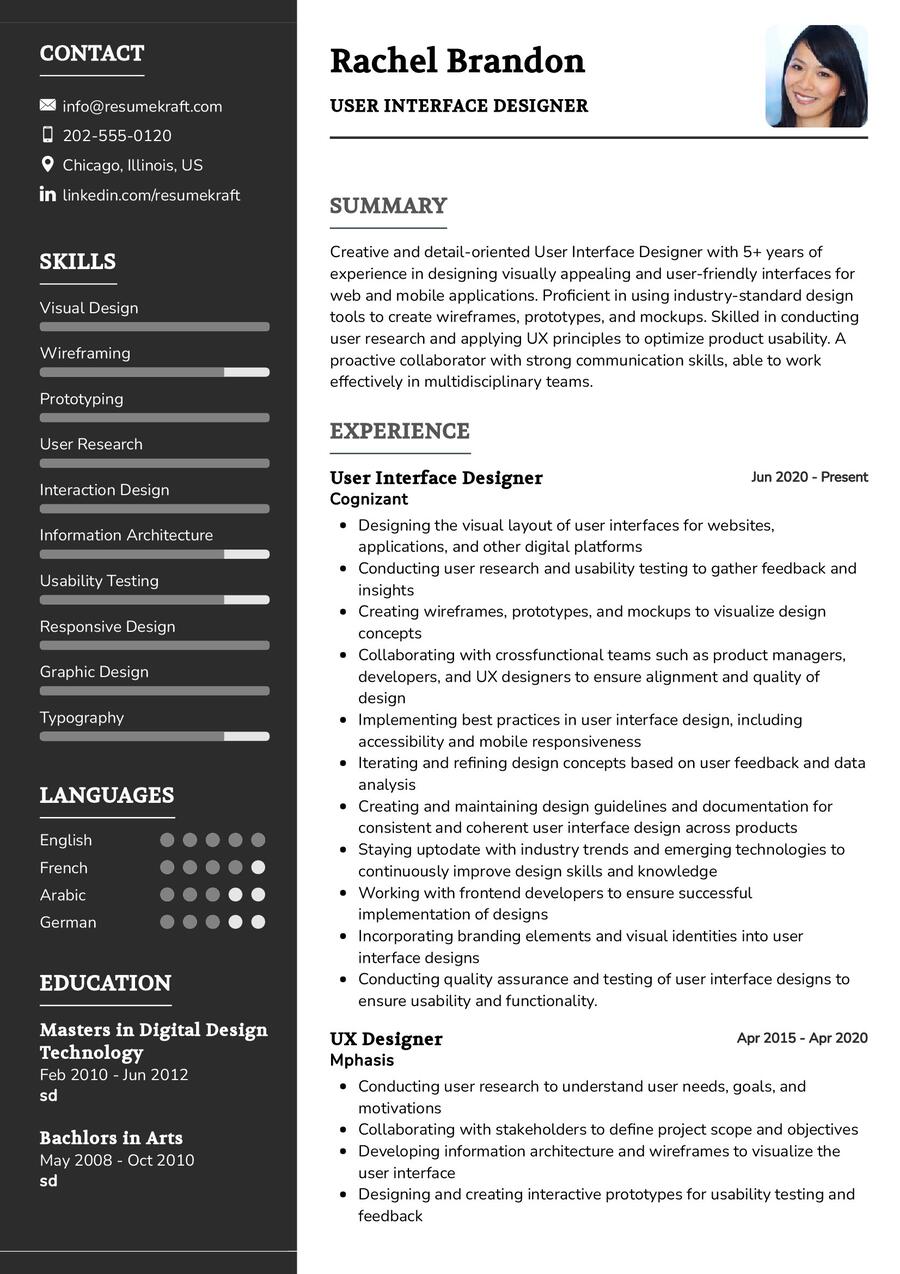User Interface Designer: Crafting Digital Experiences
In the ever-evolving digital landscape, the role of a User Interface (UI) Designer has become paramount in shaping user experiences. A harmonious blend of creativity and technical proficiency, a UI Designer plays a crucial role in making digital interfaces not only visually appealing but also highly functional. Let’s explore the multifaceted world of UI Design, a domain where innovation meets user-centric design to create seamless digital interactions.
What is the Role of a User Interface Designer?
The position of a User Interface Designer is dynamic, requiring a unique set of skills that go beyond aesthetics. A UI Designer is tasked with creating visually engaging and intuitive interfaces that enhance user satisfaction. This involves a deep understanding of user behavior, design principles, and emerging technologies. Let’s delve into the key responsibilities and skills that define the role of a UI Designer.
What are the User Interface Designer Job Requirements?
Embarking on a career as a UI Designer demands a specific skill set and educational background. Here are the essential requirements to thrive in this creative and technical role:
- A degree in Graphic Design, Web Design, Human-Computer Interaction, or a related field, showcasing a foundation in design principles.
- Proficiency in design tools such as Adobe XD, Sketch, or Figma, essential for creating and iterating on design concepts.
- Strong understanding of user-centered design principles and the ability to conduct user research to inform design decisions.
- Experience with front-end development technologies like HTML, CSS, and JavaScript, enabling effective collaboration with development teams.
- Attention to detail and a keen eye for aesthetics, ensuring designs not only meet functional requirements but also delight users.
- Excellent communication skills to effectively convey design concepts and collaborate with cross-functional teams.
Securing certifications in UI/UX design or attending relevant workshops can enhance your profile and keep you updated with industry trends.
What are the Responsibilities of a User Interface Designer?
A UI Designer’s role extends beyond creating visually appealing interfaces. Here are the key responsibilities that define the day-to-day tasks of a UI Designer:
- Collaborating with UX Designers to understand user needs and translating them into design concepts.
- Creating wireframes, prototypes, and high-fidelity designs for web and mobile applications.
- Conducting usability testing and gathering feedback to iterate and improve design solutions.
- Ensuring design consistency across all platforms and devices for a seamless user experience.
- Staying abreast of design trends and emerging technologies to incorporate innovative elements into designs.
- Collaborating with developers to implement and refine the user interface during the development process.
- Adhering to accessibility standards to ensure inclusivity in design solutions.
Each responsibility contributes to creating digital interfaces that not only meet user expectations but also elevate the overall user experience.
User Interface Designer Resume Writing Tips
Crafting a compelling resume is essential for showcasing your skills and landing your dream job as a UI Designer. Here are some tips to create a standout resume:
- Build a strong portfolio showcasing a diverse range of design projects, emphasizing your design process and problem-solving skills.
- Highlight specific projects where you improved user engagement or solved complex design challenges.
- Showcase your proficiency in design tools and mention any certifications or workshops attended.
- Use metrics to quantify the impact of your designs, such as improved user satisfaction or increased conversion rates.
- Customize your resume for each application, emphasizing the skills and experiences most relevant to the specific job.
Your resume is your design canvas, reflecting your creativity and proficiency in crafting exceptional user interfaces.
User Interface Designer Resume Summary Examples
Your resume summary is the first impression you make on potential employers. Craft a powerful summary that encapsulates your skills and experience:
- “Detail-oriented UI Designer with a passion for creating intuitive and visually appealing interfaces. Proven track record in enhancing user satisfaction through innovative design solutions.”
- “Creative and collaborative UI Designer with expertise in translating user needs into impactful designs. Adept at using design tools and collaborating with cross-functional teams to deliver exceptional user experiences.”
- “Experienced UI Designer with a focus on responsive and accessible design. Proven ability to balance aesthetics with functionality, resulting in user interfaces that captivate and delight.”
Your resume summary is your elevator pitch, so make it compelling and reflective of your unique skills and strengths.
Create a Strong Experience Section for Your User Interface Designer Resume
Your experience section is the core of your resume, where you detail your professional journey. Here are some examples to guide you:
- “Led the redesign of the company website, resulting in a 30% increase in user engagement and a 20% improvement in user satisfaction.”
- “Collaborated with the development team to implement responsive design principles, ensuring a consistent and user-friendly experience across devices.”
- “Conducted user research and usability testing for a mobile app, leading to a 25% decrease in bounce rates and increased user retention.”
Each experience is a chapter in your career story, showcasing your impact and contributions to creating exceptional user interfaces.
Sample Education Section for Your User Interface Designer Resume
Your educational background is crucial in demonstrating your foundation in design principles. Here’s how you can list your educational milestones:
- Bachelor of Fine Arts in Graphic Design, XYZ University, a journey where creativity met technical proficiency, 2016.
- UX/UI Design Certification, ABC Design Institute, an intensive program focusing on user-centered design principles, 2017.
- Advanced Web Design Workshop, DesignHub Academy, where I honed my skills in front-end development technologies, 2018.
Your education is the canvas on which your design career is painted, showcasing your commitment to learning and staying relevant in the field.
User Interface Designer Skills for Your Resume
Your skill set is your toolkit, encompassing a range of abilities that define your effectiveness as a UI Designer. Let’s list down the essential skills that a UI Designer should possess:
Soft Skills:
- Creativity and innovation, the ability to think outside the box and bring fresh ideas to design projects.
- Communication and collaboration, essential for working effectively with cross-functional teams and conveying design concepts.
- Attention to detail, ensuring that every aspect of the design is polished and contributes to a seamless user experience.
- Adaptability, the capacity to embrace new technologies and design trends to stay ahead in the rapidly evolving field.
- Problem-solving, the skill to navigate design challenges and find effective solutions that align with user needs.
Technical Skills:
- Proficiency in design tools such as Adobe XD, Sketch, Figma, or similar tools, essential for creating and iterating on design concepts.
- Front-end development skills, including HTML, CSS, and JavaScript, enabling collaboration with development teams.
- Understanding of user research and usability testing methodologies, crucial for informed design decisions.
- Knowledge of responsive design principles, ensuring interfaces adapt seamlessly to different devices and screen sizes.
- Awareness of accessibility standards, ensuring inclusivity in design solutions for users with diverse needs.
Each skill is a tool in your design toolkit, contributing to your ability to create user interfaces that captivate and resonate with users.
Most Common Mistakes to Avoid When Writing a User Interface Designer Resume
Avoiding common pitfalls is essential when crafting your UI Designer resume. Here are some mistakes to steer clear of:
- Using generic design terminology without showcasing your unique design process and contributions.
- Focusing solely on aesthetics without emphasizing the usability and functionality of your designs.
- Neglecting to tailor your resume for each application, missing the opportunity to highlight the most relevant skills and experiences.
- Omitting specific examples of successful design projects or failing to quantify the impact of your designs.
- Overlooking the importance of a well-curated portfolio, a crucial tool for showcasing your design capabilities.
Avoiding these mistakes ensures your resume effectively communicates your expertise and sets you apart in a competitive job market.
Key Takeaways for Your User Interface Designer Resume
As you craft your UI Designer resume, keep these key points in mind to stand out in the competitive job market:
- Emphasize your design process and problem-solving skills, showcasing your unique approach to creating exceptional user interfaces.
- Showcase the impact of your designs with specific metrics, demonstrating how your work has improved user engagement or satisfaction.
- Highlight your proficiency in design tools and front-end development, emphasizing your ability to collaborate effectively with development teams.
- Ensure your resume is tailored for each application, emphasizing the skills and experiences most relevant to the specific job.
Your resume is your canvas to showcase your design journey, so make it vibrant, compelling, and reflective of your unique abilities as a UI Designer.
Finally, feel free to utilize resources like AI Resume Builder, Resume Design, Resume Samples, Resume Examples, Resume Skills, Resume Help, Resume Synonyms, and Job Responsibilities to create a standout application and prepare for the User Interface Designer job interview.


